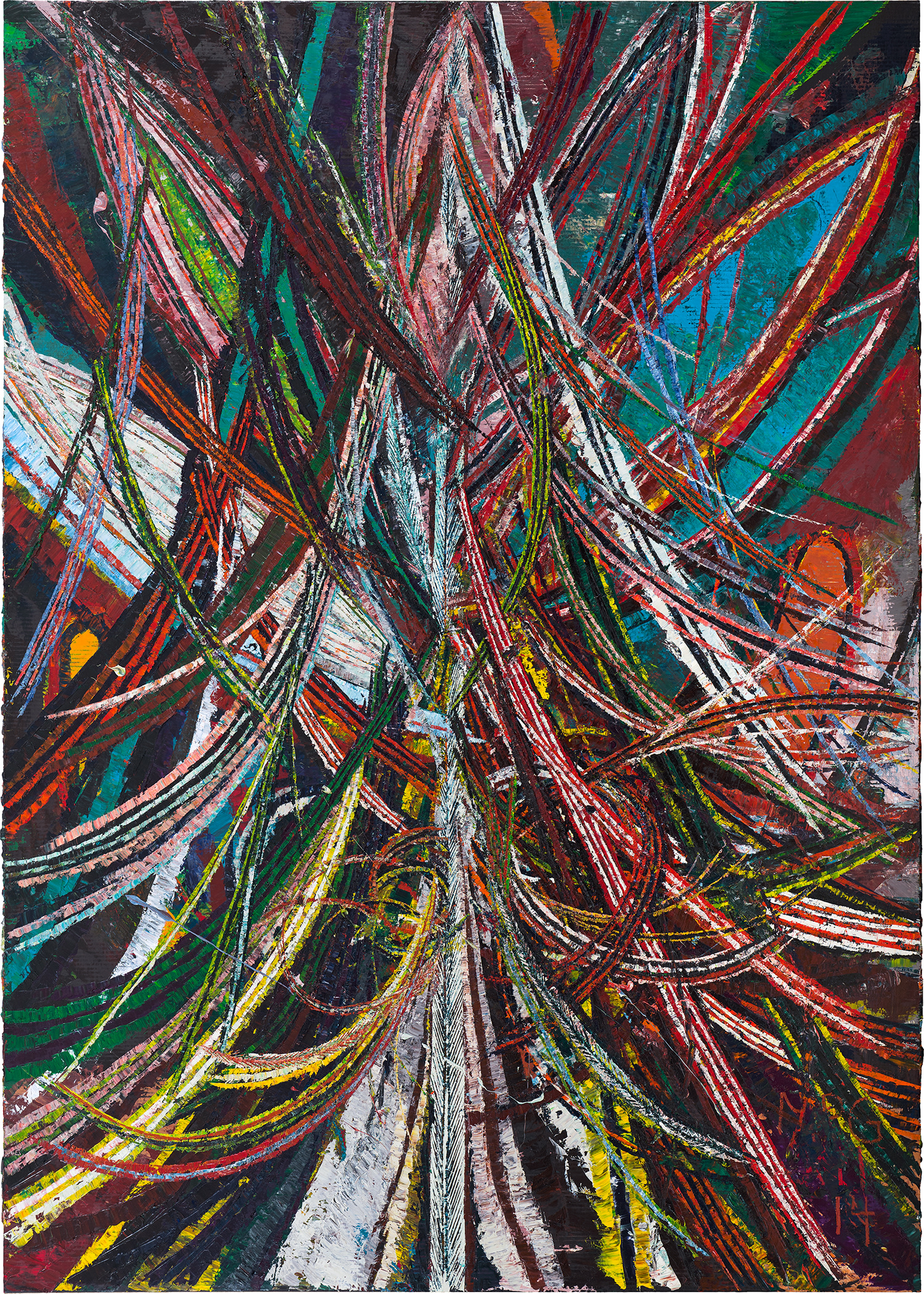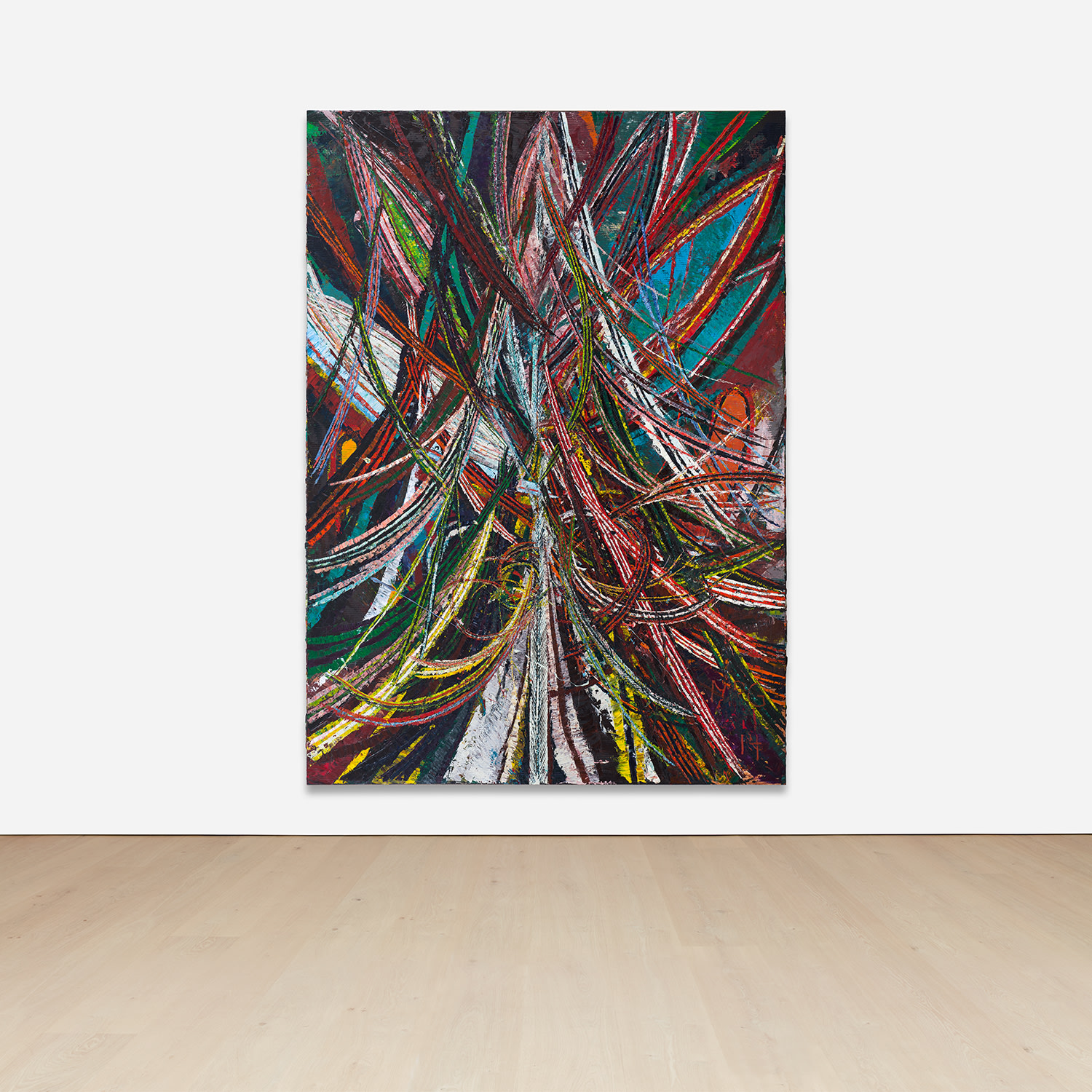



Property of an Established Private Collector
16
Mark Grotjahn
Untitled (Circus No. 12 Face 44.30)
signed with the artist’s initials, numbered and dated "MPG XII 14" lower right; signed with the artist's initials and partially titled "C 12 C 12 MPG" on the turnover edge; further signed, titled, numbered and dated "UNTITLED (CIRCUS NO. 12 FACE 44.30) 2014 2014 M. Grotjahn MARK GROTJAHN #12 XII" on the overlap
oil on cardboard mounted on linen
101 1/2 x 73 5/8 in. (257.8 x 187 cm)
Painted in 2014.